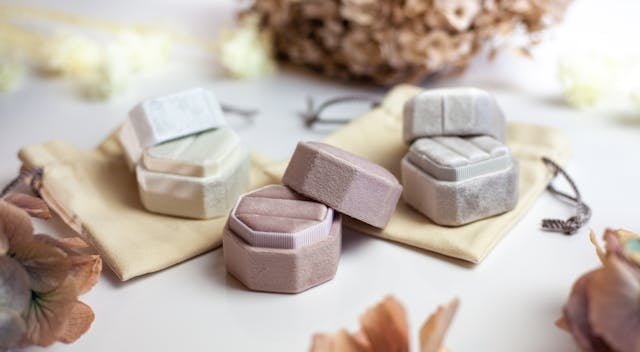Make a Lasting Impression with Professional Business Card Print
In the world of Southern hospitality and handshake culture, first impressions still countespecially in business. That’s why savvy entrepreneurs and professionals across the Lowcountry are investing in high‑quality business card print to make each introduction memorable and meaningful.
Why Business Cards Matter in Southern Business Culture
In the South, business is as much about relationships as it is about transactions. Handing someone a beautifully crafted card at a networking event, a diner, or a local festival signals respect, readiness, and professionalism. It’s a tangible token that says, “I value this momentand I hope you’ll value me in return.”
Despite the rise of digital contact sharing, South Magazine readers consistently report that business cardswhen done rightoutshine email exchanges or QR codes. They’re personal, portable, and offer a tactile connection.
What Sets Premium Business Card Print Apart?
At first glance, it might look like a standard rectangle of paper. But subtle choices in materials and design can elevate that piece of cardstock into a reflection of your brand.
1. Paper Stock & Weight
Premium cards typically start at 350 g/m² or around 12 pt thickness. Swapping to heavier stock or specialty finishes such as linen, embossed, or metallic conveys sturdiness. According to industry standards, these details signal attention to quality and durability.
2. Printing Method: Spot Color vs. Full Color
Spot color printing delivers sharp, bold hues on logos and textideal for minimal, elegant designs. Full‑color (CMYK) enables rich photographic backgrounds or detailed illustrations. Many regional printers now offer digital presses that can even emulate Pantone spot colors for smaller runs.
3. Finishes & Coatings
A UV glossy or matte aqueous coating adds that professional sheen while protecting the card from wear. Spot UV varnish can highlight particular areas (like a logo), lending a subtle texture that attracts attention without overwhelming the design.
4. Bleeds & Technical Design Specs
To prevent unexpected white edges after trimming, cards should include bleed marginstypically an additional 3–6 mm per side. Standard cut sizes vary by country: in the U.S., most cards are 3.5″×2″, but in the U.K. or Europe, 85×55 mm is common.
Choosing the Right Printer in the South
From Savannah to Birmingham to Charleston, regional print shops often offer same‑day or next‑day turnaround for business cards. Look for local printers who specialize in brand identity and offer design templates that align with wood‑printed aesthetics, color palettes, and folding options.
Many of these establishments understand that Southern professionals value personable service and supportreview authors frequently highlight quick art‑file proofs, crisp press results, and friendly guidance through options like double‑sided printing, embossing, or specialty stocks.
Designing to Connect with Southern Flair
Keep It Clean & Legible
Don’t clutter the card. Stick with essential details: name, title, company, phone (even cell), email, and a website or social handle as needed. White text on dark cardstock can look stunningbut make sure fonts are readable. If including a photo or motif, choose something subtle and not overpowering.
Showcase Your Brand Identity
Whether you run a Lowcountry cafe, a Charleston design studio, or a Nashville marketing consultancy, your card should reflect your brand’s spirit. Incorporate local imagerypalmetto trees, coastal hues, or rustic textures. Embossed lettering or foil stamping (in gold or copper tones) can underscore refinement.
Add Personal Touches
Southern charm lies in warmth. A tasteful quote, or even a friendly tagline like “Let’s keep it sweet and Southern,” can help break the ice. Best practice: include your cell phone beneath your email, signaling accessibility. And leaving a tiny blank spot to write a personal note on the back shows thoughtfulness as Anchor Medical puts a personal touch with handwritten phone numbers on cards.
Best Practices Before Printing
- Approve a digital proof with crop marks and bleeds clearly visible.
- Ensure you’re using CMYK color settings; Pantone spot colors may add cost.
- Test a sample card if possiblefeel the finish, check the trim.
- Ask about turnaround time, shipping, and pricing tiers (e.g. 250 vs. 1,000 cards).
Cost vs. Value: Is Premium Print Worth It?
A basic run of 500 business cards might cost under $50. Upgrading to premium cardstock, double‑sided printing, and UV coating adds to the pricebut not drastically. For professionals building trust with new clients or collaborators, that slight difference in cost often translates to a big difference in perceived value.
As one business owner said after receiving their locally printed cards, the weight and the glossy sheen conveyed instant credibility and sparked conversations that digital sharing never would.
Final Thought
When you hand someone your card in the South, you’re offering more than your contact infoyou’re extending your brand’s hospitality. Thoughtful business card print communicates reliability, attention to detail, and a willingness to invest in connections.
Don’t underestimate the power of a well‑crafted card in rooms full of potential collaborators. In an age of screens and swipes, a tactile, polished card stands out and stays remembered.
If you’re ready to refine your first impression or refresh your brand cardlocal Southern printers offer both design expertise and a deep understanding of what resonates here. After all, in Southern business, sincerity and style go hand in hand.












